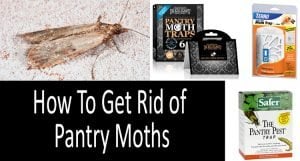Insects and arthropods are very small even then; they compete with the human beings for food and shelter. These very small insects attack the crops and food articles of the human beings. They not only damage the food but also destroy the economy of man. Fruit flies are also the food competitor of man that attack different fruits and vegetables.
Several types of fruit flies are in all the environments that attack variety of fruits. Every fruit fly has its own life cycle according to its temperature and other environmental conditions. The most common of flies is Drosophila that attack many fruits and vegetables. However, fruit fly life cycle varies in different species. You must be thinking about the different ways by which you can control this creature. However, you have to learn about different life stages so that you can easily target and manage it.
Stages of fruit fly life cycle
To understand how are fruit flies born , it is important to know that all the different types of fruit flies have the same stages in their life cycle that are egg, larva, pupa and adult stage. Nevertheless, the duration of these stages may be different in different hosts and ecological conditions. After reading each stage, you will be clear about how are fruit flies born.
Fruit fly eggs

The adult fruit flies lay eggs in the ripening fruits. The sexually matured females of flies lay eggs under the skin of the mature fruit with its ovipositor. About 10-20 eggs are laid by one female at one time. This is the stage of the drosophila life cycle that in not prominent. Hatching of eggs occur within 2-4 days or somewhat longer in colder conditions. This stage in drosophila life cycle is the most vulnerable stage towards the insecticide application but due to the non-prominent nature, it is very difficult to identify. So in short, you should know the following fruit fly facts:
- Egg stage is inside the fruit or plant part
- This stage is vulnerable towards the pesticide application
- All the fruit flies have white and curved eggs
- Management can be done at this stage
Larvae
The newly hatched larvae start feeding on the flesh of fruit. The larvae are legless and that is why are called as maggots. The drosophila life cycle is extended or shortened depending on the stages from which it passes. Since the main target of the maggot is to empty the inner contents of the fruit so they prefer to go with the inner damage. From the outer side of fruit, you can see different symptoms depending upon the stage of maggots. Usually the fruit falls during the last stage and maggots ooze out of the fruit. Keeping in view management perspective, following points should be noted:
- Maggots serve as most damaging stage
- These can be detected by the pulpy appearance of fruit
- Maggots continue to damage the inner contents
- This stage cannot be managed by insecticide application
Pupae

The pupae are formed after the maggots stop eating and rest in the soil. These are usually in the form of brown capsules found on the top layer of soil. After the fruit fly eggs, pupal stage can also be managed by taking suitable measures. These are usually found inside the soil. The ploughing method is most efficient towards managing this stage. In this way, the pupae become exposed to the sunlight and kills by the action of ultraviolet light.
Adult
Among amazing fruit fly facts, one of the facts is that male is attracted towards the female by the action of a chemical, methyl eugenic. This chemical is not synthetically produced and can be utilized towards trapping the male adults. If you decide to use fruit fly trap both males and females, then fermentation bait is most effective option.
{code 416}





